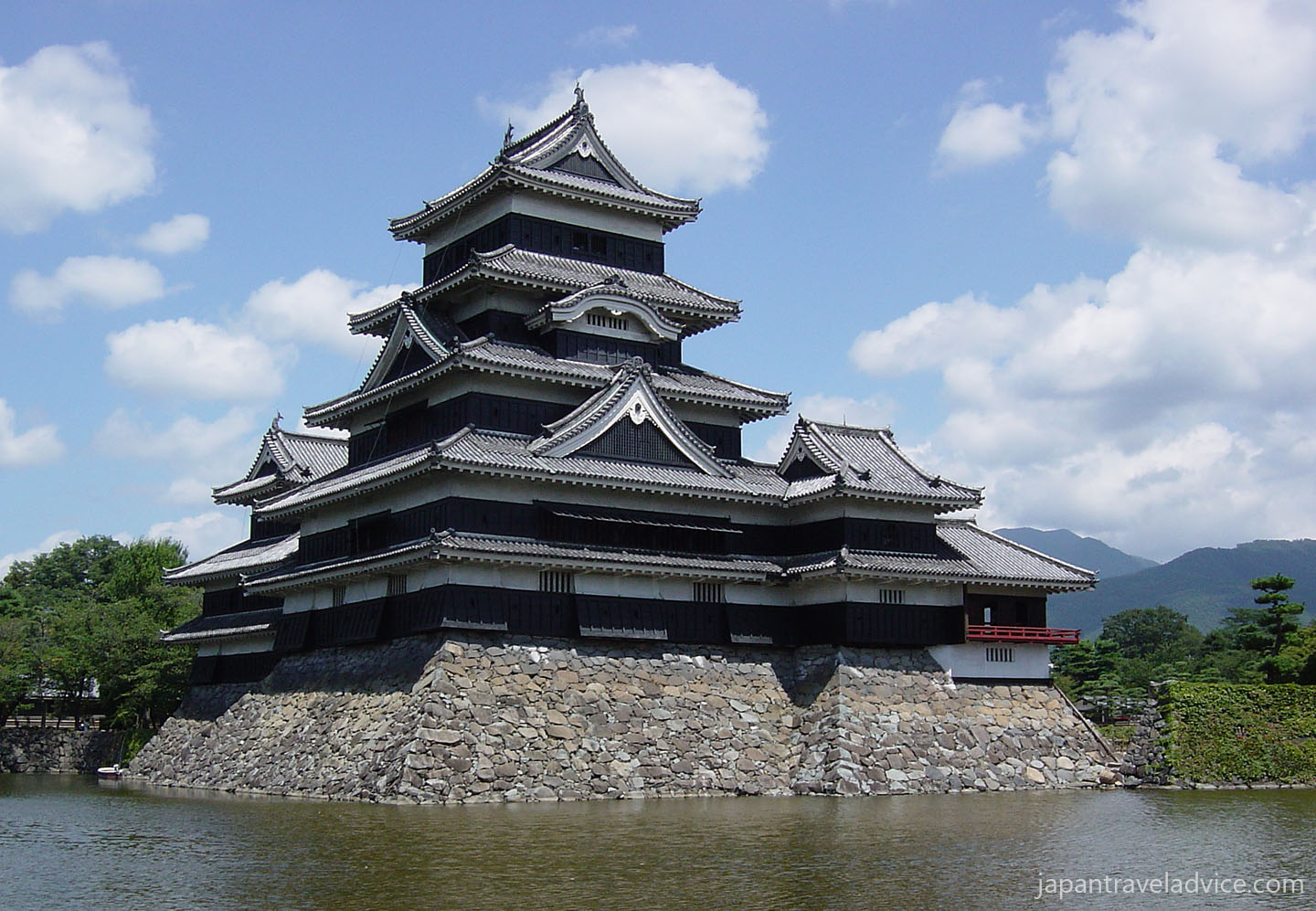
Matsumoto Castle is one of the most visually stunning castles in all of Japan. It is one of the few original castles still remaining in Japan, and is known as karasu-jo (Crow Castle) because of its black exterior. Matsumoto castle is a flatland castle (hirajiro) built on a plain rather than on a hill or mountain. It is located in Matsumoto city, in Nagano Prefecture.
The main attraction of the castle is the original three turreted castle donjon (keep), built around 1595 in contrasting black and white. The castle maintains its original wooden interiors and external stonework, and is listed as a National Treasure of Japan.

Inside the castle
Inside the castle, steep steps and ladders lead you up through six storeys and five levels featuring different rooms.
The first floor of the donjon (keep) features pillars made from hemlock, cypress and pine. The room was most likely used for storing food, weapons and ammunition.
The second floor of the donjon (keep) is much brighter than the other rooms because of its distinctive three tategoshi (vertical grill) windows. The floor has four rooms, which were believed to have been used as a place for the warriors to assemble. Today it is a gun museum with a collection of guns, armor and other weapons.
The third floor of the donjon (keep) is known as the dark room and cannot be seen from the outside because it has no windows. The castle seems like it has five stories from the outside, but in fact has six. This room was a secret to the castle’s enemies outside, and was used to keep warriors safe during times of battle.
The fourth floor of the donjon (keep) was used as a private residence and is where the castle’s lord stayed in times of emergency. The pillars are made of cypress wood and the whole room is exquisitely built.
The fifth floor of the donjon (keep) was used for tactical meetings by the military officers during wartime. The ceiling is 4.54 meters high, which is a lot higher than the other floors.
The top floor or the sixth floor of the donjon (keep) was used as a watchtower during wartime. A god named nijuroku ya shin (god of 26 nights) has a dedication in the center of the ceiling to protect Matsumoto Castle.
tsukimi yagura (moon viewing pavilion)
The tsukimi yagura, pictured below was used in times of peace for viewing the moon. Three sides of the room (north, east and south) are open to the air when the sliding doors are opened. The vermilion lacquered walls along with the ship hull shaped ceiling create a wide open feeling.

The kuro-mon (black gate)
The main gates for the honmaru (main wing) are the kuro-mon (black gate) and masugata (square shape gate), which were essential for the security of the castle.
The taiko-mon (drum gate)
The taiko-mon (drum gate) was built around 1595, and is on top of the north stonewall. The taiko-ro (drum tower) was used to signal the time, like a clock. It was also used as an assembly area during emergencies.
History of Matsumoto Castle
The origin of Matsumoto Castle goes back to Fukashi Castle, which was built by Shimadachi Sadanaga of the Ogasawara clan in 1504. The castle came under the rule of the Takeda clan in 1550 and then Tokugawa Ieyasu.
Ieyasu was later transferred to the Kanto region by Toyotomi Hideyoshi and the castle was placed in the hands of Ishikawa Kazumasa in 1590. It was completed by the daimyo Ishikawa Kazumasa and his son Yasunaga to its present form.


Opening Hours
Matsumoto Castle is open from 8:30 am to 5:00 pm (entry before 4:30 pm)
The castle is closed from December 29 to January 3
Entry Fee
Adults: 600 yen
Elementary & Junior High School students: 300 yen
How to Get There
The castle is 15 minutes on foot from JR Matsumoto Station. You can also take a bus from JR Matsumoto Station to Shiyakusho-mae bus stop (190 yen).
Address: 4-1 Marunouchi, Matsumoto City, Nagano, Japan 390-0873
Best Time to Go
Every season has something to offer, but spring is the best for the beautiful cherry blossoms. Matsumoto Castle has around 300 trees planted around grounds of the castle.
You can view other castles in Japan on our Castle Explorer Page











